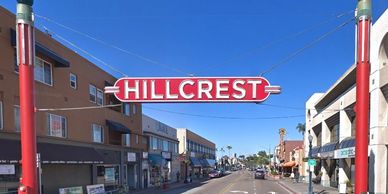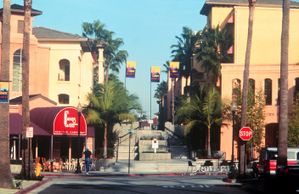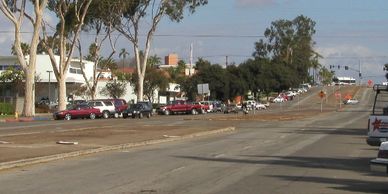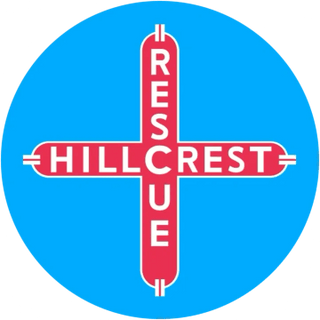About Us
Our Story
Appropriate Density
In-scale Height

Rescue Hillcrest is dedicated to fostering the quality of life in Hillcrest, one of the six officially designated neighborhoods that comprise the Uptown planning area just north and west of Downtown San Diego.
Already, "Hillcrest is one of the more intensely developed neighborhoods in San Diego," with infill on most lots, yet has maintained its character as walkable and livable. Named in 2007 by the American Planning Association as one of the 10 best neighborhoods in America, those of us who live here feel a special pride in fostering growth in keeping with the existing community.
However, Hillcrest has been and remains under siege by outside forces that are trying to rig the system, by overruling actual community input — donors over voters — in order to allow runaway development at the expense of the existing neighborhood.
They want to take advantage of Hillcrest's desirable location and those living here to tear down whatever they want and throw up shoebox high rises for their foreign investor, REIT, and AirBnB clients,
But there's more to us than just opposition to speculative development. Here are our five positive goals:
In-scale Height
Appropriate Density
In-scale Height

More than any other consideration, limits on height are what can best foster the quality of life in Hillcrest — and all of Uptown — both for maintaining scale and affordability.
Anyone walking through our neighborhood can see that the existing structures are all, with a handful of exceptions, between one and three stories. So contrary to critics who claim height limits are "zero growth," buildings are already automatically permitted for five to six stories tall — double and triple what is on the ground now.
Height for the sake of height is just an arms race — not logical planning.
Also, buildings 65' and under mean that wood frame construction, the least expensive, can still be used. This helps ensure affordable housing. Higher buildings structurally require steel and concrete, which automatically price them into the luxury — and higher profit margin — market.
Appropriate Density
Appropriate Density
Responsive Development

Density is more complex and less self-evident than height. And residential density is different than commercial and mixed use. Which is why there are triggers in the Community Plan that call for community input.
Density without services or amenities is misery. If density alone is what's best, then Manila and Mumbai would be the best places to live.
Property values are inflated when density is increased, pricing out those who can no longer afford it. That’s why there’s sprawl. Increased density allows more units per lot, which means greater potential income. Greater potential income increases value, which inflates costs and profits for developers — who pass expenses on to buyers and renters while pocketing ever greater margins.
There can be a productive discussion about what works best in which situation (mixed use versus residential, traffic corridor versus quiet street).
But reasonably restricting densities of dwelling units per acre would prevent buildings with the ridiculous floor area ratios of jail-cell-sized housing units — which is what some developers want to build in Hillcrest — that would overwhelm existing safety, medical, transit, and other services without paying fees to compensate.
Responsive Development
Responsive Development

The Community Plan is supposed to be a definite resource for what can and cannot be done with land use, mobility, urban design, public safety, recreation, conservation, noise, and historic preservation. Which is why it has thresholds for when projects require community review. This is so everyone is working from the same playbook.
We have zoning and codes for good reasons; so requests to be exempt from them need to be based on better ones.
Schemes such as density bonuses, "transit oriented development," and CPIOZ ("see-pause") allow developers to pay for play to get out of restrictions others have to follow, such as including meaningful affordable housing or parking. This sidelines elected community planning groups and leaves the decision whether to allow exceptions up to the whim of appointed planning commissioners — and the politicians receiving developer donations who appoint them — to gut legal protections as "subjective."
Historic Preservation

“What do we have from the past? Art and thought. That’s what lasts. That’s what continues to feed people and give them an idea of something better.” –Susan Sontag
The creation of a historic district for Hillcrest was originally proposed in 1981 and included in the 1988 Uptown Community Plan, and was outlined with greater clarity in the 2015 draft Plan. Further, the City completed a 918-page draft Uptown Historic Resources Survey which made commendable and specific suggestions for preservation.
However, private groups working on behalf of developers, lobbied to take this district out of the Community Plan, and replace it with a special "Gateway Specific Plan," a taxpayer-funded subsidy to line the pockets of a handful of landowners at even greater expense of the community. It's time to establish this historic district for the economic and cultural benefit of our neighborhood — before it's too late
A Real Park

Since at least 1988, the City has recommended the 1.60 acres of paved medians and right-of-way the length of Normal Street be developed into a public park.
There is no existing park or other potential park land available in Hillcrest.
This majestic space has the potential to be the envy of the region — which is why it needs to be developed by the City as planned as an actual greenway, with grass and a playground, and kept out of private hands interested in its commercial value.
Unfortunately, the scheme to use public funds to customize this space for the commercial benefit of a private corporation is underway. Here's an open letter examining what's wrong with it.
Write to cityattorney@sandiego.gov asking for an investigation into this diversion of public space for private profit.
Cookie Policy
This website uses cookies for visitor metrics only. You can continue to access this site whether you allow the use of cookies or not.
